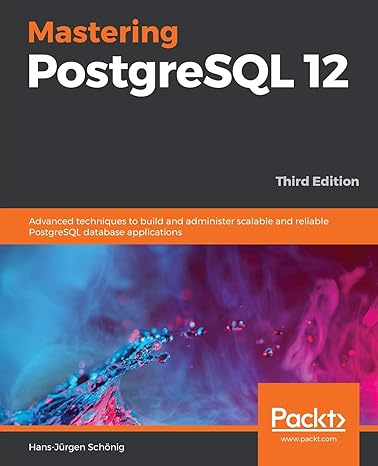Question
I ask help with this c++ problem multiple times, but I got soluations that didn't fillfull the requirements. Please MAKE SURE to use bitwise operators
I ask help with this c++ problem multiple times, but I got soluations that didn't fillfull the requirements. Please MAKE SURE to use bitwise operators & read carefully the requirements


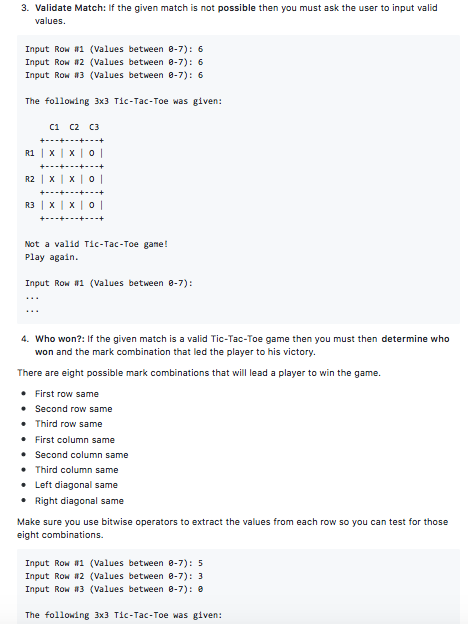
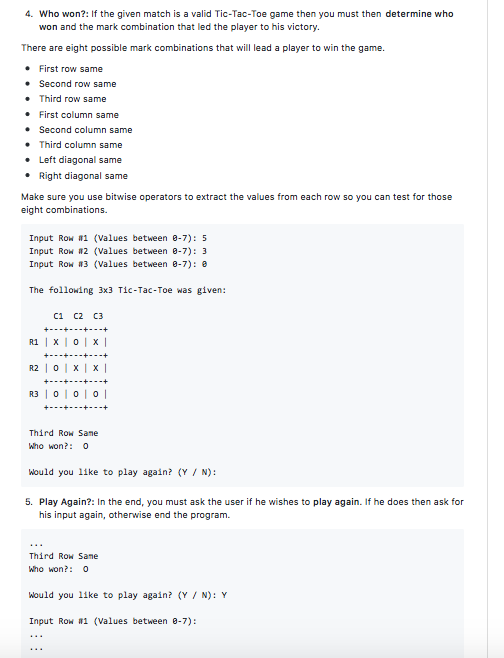
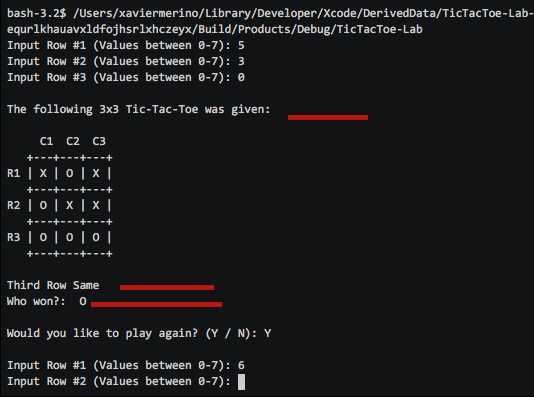
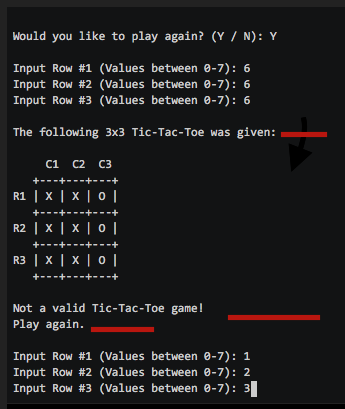
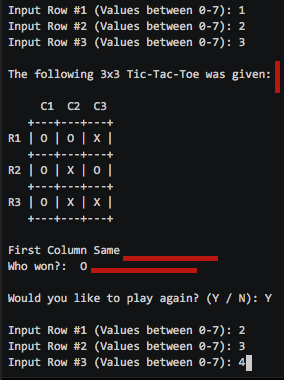


These two codes work, but the exeprts didn't include the requirements that should have been included. So please once again, read the requirements carefully
#include
#include
#include
using namespace std;
#define GRID_SIZE 3
#define INVALID -2
#define TIE -1
#define O_MARK 0
#define X_MARK 1
#define ROW_MIN 0
#define ROW_MAX 7
bool not_valid();
bool play();
int extract_column(int row, int column);
void print_grid(int grid[][GRID_SIZE]);
int same_row(int grid[][GRID_SIZE], int row);
int same_column(int grid[][GRID_SIZE], int col);
int same_diagonal1(int grid[][GRID_SIZE]);
int same_diagonal2(int grid[][GRID_SIZE]);
int count(int grid[][GRID_SIZE], int mark);
/* Main function, it starts the program */
int main(int argc, char* argv[])
{
bool play_more = true;
while (play_more)
play_more = play(); // Play until user decides to not continue.
return 0;
}
/* Shows that the game was not valid and return true.
*/
bool not_valid()
{
cout
cout
return true;
}
/* One round of a play.
*/
bool play()
{
int grid[GRID_SIZE][GRID_SIZE];
// Take inputs:
for (int row = 1; row
{
int input = -1;
while (input ROW_MAX)
{
cout
cin >> input;
}
// Fill the row with marks:
for (int column = 1; column
grid[row - 1][column - 1] = extract_column(input, column);
}
// Output the grid with marks:
cout
print_grid(grid);
cout
// Validy the game play:
if (count(grid, X_MARK)
return not_valid(); // Play once more
string output;
int won = TIE;
// Checks rows
int res = same_row(grid, 1); // 1st Row
if (res != TIE)
{
won = res;
output = "First Row Same";
}
res = same_row(grid, 2); // 2nd Row
if (res != TIE)
{
if (won != res)
return not_valid();
won = res;
output = "Second Row Same";
}
res = same_row(grid, 3); // 3rd Row
if (res != TIE)
{
if (won != TIE && won != res)
return not_valid();
won = res;
output = "Third Row Same";
}
// Check columns
res = same_column(grid, 1); // 1st Column
if (res != TIE)
{
if (won != TIE && won != res)
return not_valid();
won = res;
if (output == "")
output = "First Column Same";
}
res = same_column(grid, 2); // 2nd Column
if (res != TIE)
{
if (won != TIE && won != res)
return not_valid();
won = res;
if (output == "")
output = "Second Column Same";
}
res = same_column(grid, 3); // 3rd Column
if (res != TIE)
{
if (won != TIE && won != res)
return not_valid();
won = res;
if (output == "")
output = "Third Column Same";
}
// Check diagonals
res = same_diagonal1(grid); // 1st Diagonal
if (res != TIE)
{
if (won != TIE && won != res)
return not_valid();
won = res;
if (output == "")
output = "Diagonal left up corner to right bottom corner Same";
}
res = same_diagonal2(grid); // 2nd Diagonal
if (res != TIE)
{
if (won != TIE && won != res)
return not_valid();
won = res;
if (output == "")
output = "Diagonal right up corner to left bottom corner Same";
}
// Output result:
if (won == TIE)
cout
else
{
cout
cout
}
// Ask if want to play once more:
cout
cin >> output;
if (output == "Y" || output == "y")
return true;
return false;
}
/* Extracts mark (X or O) from the row input.
* Arguments:
* row - Input, integer from 0 to 7 inclusively.
* column - Column number, either 1 or 2 or 3.
* Returns:
* Mark in column specified, X or O.
*/
int extract_column(int row, int column)
{
return ((row >> (GRID_SIZE - column)) & 1);
}
/* Prints Tic Tac Toe board with marks.
* Arguments:
* grid - Board.
*/
void print_grid(int grid[][GRID_SIZE])
{
cout
cout
for (int row = 1; row
{
cout
for (int column = 1; column
{
if (grid[row-1][column-1] == O_MARK)
cout
else cout
}
cout
}
return;
}
/* Checks if the row specified in the grid is the same.
* Arguments:
* grid - The board.
* row - The row number, integer either 1 or 2 or 3.
* Returns:
* O if three Os in a row, X if three Xs in a row, -1 otherwise.
*/
int same_row(int grid[][GRID_SIZE], int row)
{
if (grid[row - 1][0] == grid[row - 1][1] && grid[row - 1][0] == grid[row - 1][2])
return grid[row - 1][0];
return TIE;
}
/* Checks if the column specified in the grid is the same.
* Arguments:
* grid - The board.
* col - The column number, integer either 1 or 2 or 3.
* Returns:
* O if three Os in a column, X if three Xs in a column, -1 otherwise.
*/
int same_column(int grid[][GRID_SIZE], int col)
{
if (grid[0][col - 1] == grid[1][col - 1] && grid[0][col - 1] == grid[2][col - 1])
return grid[0][col - 1];
return TIE;
}
/* Checks if the diagonal from left upper conner is the same.
* Arguments:
* grid - The board.
* Returns:
* O if three Os in a diagonal, X if three Xs in a diagonal, -1 otherwise.
*/
int same_diagonal1(int grid[][GRID_SIZE])
{
if (grid[0][0] == grid[1][1] && grid[0][0] == grid[2][2])
return grid[1][1];
return TIE;
}
The oder code is
#include
struct Board { unsigned short row1; unsigned short row2; unsigned short row3; };
void get_rows(Board *b1); void display_board(Board *b1); string return_row(unsigned short row); bool check_validity(Board *b1); int num_ones(unsigned short row);
int main() { bool isInValid{}; char playAgain{}; Board *b1 = new Board{}; do { get_rows(b1); display_board(b1); isInValid = check_validity(b1); if (isInValid) cerr > playAgain; } } while ( isInValid || playAgain == 'Y' || playAgain == 'y' ); return 0; }
/** * Gets the input from user and saves data to the board. */ void get_rows(Board *b1) { unsigned short row1, row2, row3;
// ROW1 // ==== do { cout > row1; } while (row1 7); b1->row1 = row1;
// ROW2 // ==== do { cout > row2; } while (row2 7); b1->row2 = row2;
// ROW3 // ==== do { cout > row3; } while (row3 7); b1->row3 = row3; };
void display_board(Board *b1) { cout row1) row2) row3)
/** * Returns a string respective to the given input. */ string return_row(unsigned short row) { switch(row) { case 0: return "| O | O | O |"; case 1: return "| O | O | X |"; case 2: return "| O | X | 0 |"; case 3: return "| O | X | X |"; case 4: return "| X | O | 0 |"; case 5: return "| X | O | X |"; case 6: return "| X | X | 0 |"; case 7: return "| X | X | X |"; }; };
bool check_validity(Board *b1) { int tot = num_ones(b1->row1) + num_ones(b1->row2) + num_ones(b1->row3); return tot != 5 && tot != 4; };
int num_ones(unsigned short row) { switch (row) { case 0: return 0; case 1: return 1; case 2: return 1; case 3: return 2; case 4: return 1; case 5: return 2; case 6: return 2; case 7: return 3; } };
/* Checks if the diagonal from right upper conner is the same.
* Arguments:
* grid - The board.
* Returns:
* O if three Os in a diagonal, X if three Xs in a diagonal, -1 otherwise.
*/
int same_diagonal2(int grid[][GRID_SIZE])
{
if (grid[0][2] == grid[1][1] && grid[0][2] == grid[2][0])
return grid[1][1];
return TIE;
}
/* Counts number of marks in the grid.
* Arguments:
* grid - The board.
* mark - The mark, either X (1) or O (0).
* Returns:
* The number of that mark in the grid.
*/
int count(int grid[][GRID_SIZE], int mark)
{
int i = 0;
for (int row = 0; row
for (int col = 0; col
if (grid[row][col] == mark)
i++;
return i;
}
Make use of control and repetition structures for input validation. Make use of bitwise operators to handle the underlying bits in a variable. Apply formatting rules to console output. Replicate the gameplay of the Tic-Tac oe game Introduction to Tic-Tac-Toe Tic-Tac-Toe is a kid's game consisting of a 3x3 grid and two players. The players, X and O, take turns marking a spot in the grid. The player who places three marks in a horizontal, vertical, or diagonal row wins the game. It is also possible for the game to end in a tie. See an example below. If you wish to play the game click this link. Lab Task Your task in this session is to write a program that takes a Tic-Tac-Toe game and determines who won. Let's assume we have the match below. From the left grid it is clear that player O won the match. The grid on the right is the match's binary representation. We are using a one to represent X's marks and a zero to represent O's marks. o o o 0 0 0 Binary Match Representation Representation We then assign a label to each row and column to make it easier to locate where the players' marks Row 1 X X 1 0 1 Row 2 Row 3 o o o 0 0 0 Binary Match Representation Representation
Step by Step Solution
There are 3 Steps involved in it
Step: 1

Get Instant Access to Expert-Tailored Solutions
See step-by-step solutions with expert insights and AI powered tools for academic success
Step: 2

Step: 3

Ace Your Homework with AI
Get the answers you need in no time with our AI-driven, step-by-step assistance
Get Started


